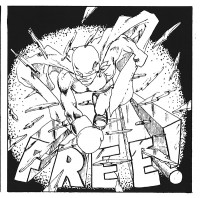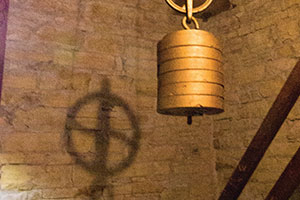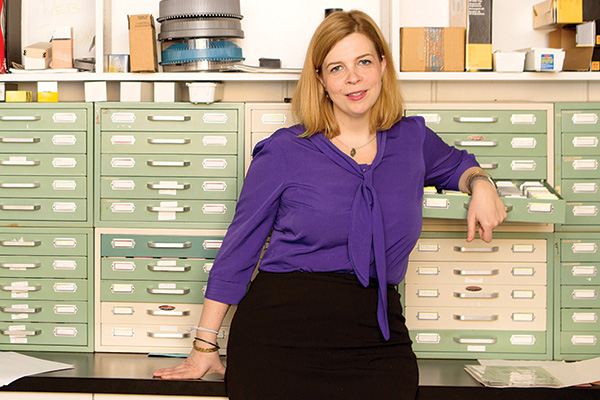Letters Spring 2016
 Cover girls
Cover girls
You can imagine my surprise on picking up the recent Cornell Report to see a picture of my roommate on the cover. I quickly turned to the inside page to find out what Betty (the shorter of the two) was up to only to learn that no one at Cornell had been able to identify either of the two coeds pictured on the cover. Betty Billman graduated in 1949. She had a lovely alto voice and was known on campus for her singing. With her, I think, is Patricia Frei, who graduated in 1950. Both women were active in the campus religious society. Seeing them both brought back memories of long philosophical discussions and outings at the Palisades.
Harriet Frye Heath ’49
Winter Harbor, Maine
Editor’s note: I am sorry to report that, according to college records, both women are deceased. Betty Billman Holm ’49 died in 2004, and Patricia Frei Hoar ’50 in 2015.
Brown Bomber speaks
I was just as honored to be featured within the pages of the recent edition of the Cornell Report as I was thrilled to be highlighted in Oregon’s PQ Monthly, the publication mentioned in the Report’s article. I would, however, like to give a tiny bit of background about the cartoon published with the article “Return of the Brown Bomber.”
 The significance of that particular strip is based on the fact that it was the second of a series of three strips to appear in The Cornellian in the spring of 1979. The previous strip made it clear that the Bomber had been sequestered in his dorm room’s closet, contemplating revealing something about himself to the Cornell community and wasn’t sure he would be accepted afterward. A naïve classmate innocently asks the Bomber to come out of the closet. The next strip revealed that B.B. had broken out of the closet. “Coming out of the closet” (an offshoot of “skeletons in the closet” representing secrets being kept) was a concept popularized by the late gay icon Harvey Milk and was still a fairly new social movement at the time. It is very impressive to look back and acknowledge just how much we were on the cutting edge of a major human rights phenomenon.
The significance of that particular strip is based on the fact that it was the second of a series of three strips to appear in The Cornellian in the spring of 1979. The previous strip made it clear that the Bomber had been sequestered in his dorm room’s closet, contemplating revealing something about himself to the Cornell community and wasn’t sure he would be accepted afterward. A naïve classmate innocently asks the Bomber to come out of the closet. The next strip revealed that B.B. had broken out of the closet. “Coming out of the closet” (an offshoot of “skeletons in the closet” representing secrets being kept) was a concept popularized by the late gay icon Harvey Milk and was still a fairly new social movement at the time. It is very impressive to look back and acknowledge just how much we were on the cutting edge of a major human rights phenomenon.
At the time, a main focus within the pages of The Cornellian was to exhibit steadfast intolerance for all forms of discrimination—especially against lesbians and gays, as well as women and people of color. When I look back on it, I am even more proud to have been a part of the “coming out” movement that is the absolute precursor to the recent national same-sex marriage phenomenon. Cornell should also be proud of Cornellian editors Phil Luing ’79 and Susan Mohler ’79 for their part in elevating the consciousness of not only the student body at the time, but faculty and administration as well.
Rupert Kinnard ’79
Portland, Oregon
The story behind the celebration
After Cornell won the 1947 NCAA Championship, its wrestling team was thought to have a shot at the AAU title—if the team could get to San Francisco where the championship was held. Eligibility to participate was more competitive than the NCAA’s. Individuals, YMCAs, athletic clubs, and armed forces teams, as well as colleges and universities, could enter.
 The Mount Vernon business community came together and helped financially. Al Morrissey, who was one of my father’s [Coach Paul K. Scott ’29] closest friends, took it upon himself to go business to business and raise the necessary monies for the Cornell team to have San Francisco train and hotel funds covered. It was a community effort.
The Mount Vernon business community came together and helped financially. Al Morrissey, who was one of my father’s [Coach Paul K. Scott ’29] closest friends, took it upon himself to go business to business and raise the necessary monies for the Cornell team to have San Francisco train and hotel funds covered. It was a community effort.
My father called my mother long distance to report that Cornell had won the AAU tournament. My mother called everyone who would be interested with the news. Cornell’s then president, Russell Cole, sent a telegram to the team in San Francisco congratulating them. I remember the town and Cornell went wild!
It was several days before the team returned by train. In the meantime, the college and the town organized the parade, pictured in the fall Cornell Report, from the depot down Highway 1 and onto main street to the Cornell campus. All of the businesses had soaped their windows with congratulatory messages.
Main street all the way to the college was lined with cheering people. A recognition ceremony then took place in Alumni Gym. TV was several years away from being a reality in eastern Iowa. However, newspapers and radio stations from around the state and even Chicago were there. Life Magazine had pictures and a writeup about Cornell’s team in its next issue. It was a great day in Mount Vernon.
R.K. Scott ’63
Loudon, Tennessee
Cole Bin questions
When reading the fall Cornell Report, I was interested in the picture, on page 53, of what was alleged to be the Cole Bin. I don’t believe it was the Cole Bin. Looking through Royal Purples, I was able to establish that it was George’s Grill (I think that was the name of it.) It was a separate place off campus run by George and Alice Brown. Several Royal Purples have pictures of both places, so it is confusing. George and Alice did run the original Cole Bin. It appears that in or around 1947 when the second Cole Bin was opened in the ravine below today’s Thomas Commons, George and Alice opened their own place, and the college hired staff to run the Cole Bin. I am curious about when George and Alice opened their own place, what prompted them to open their own place, and what the relationship was between the two places. Until the student union opened in the lower level of the new library in 1957, both places continued to be referenced in the Royal Purple. Maybe someone out there from the period can shed more light.
Harold Templeman ’58
West Des Moines, Iowa





